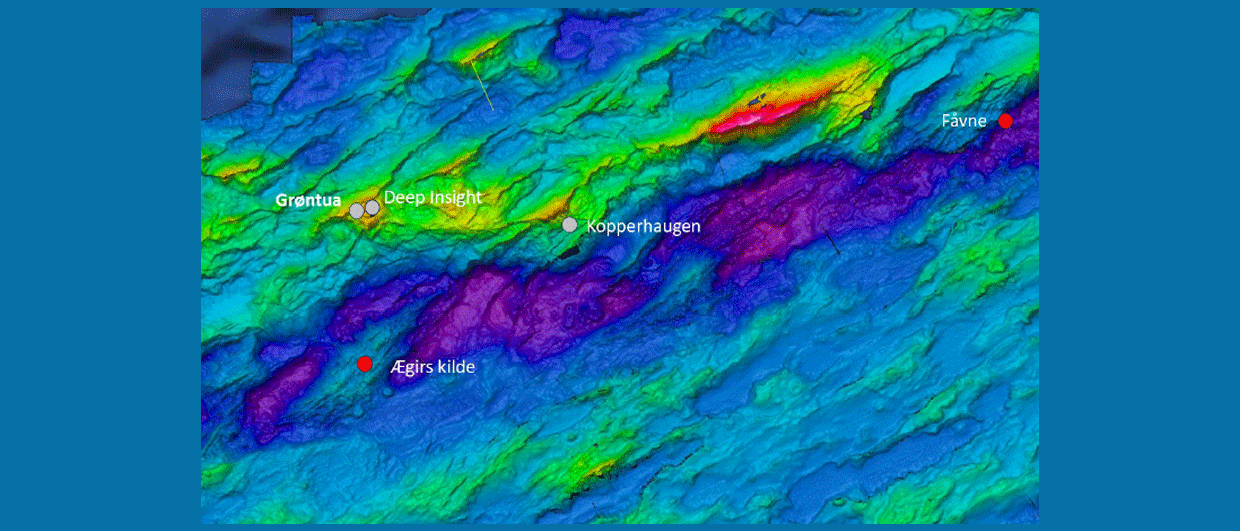Hydrothermal chimneys are a spectacular sight. They were first observed in the Pacific Ocean in 1979, and in Norway at the Jan Mayen hydrothermal fields on the Mohns ridge in 2005.
The hot springs and chimneys can be found where boiling mineral-rich water has made its way up to the seabed. In the face of cold seawater, minerals are deposited as sulphides.So far, ten sulphide deposits have been detected along the Mohns and Knipovich ridges on the Norwegian continental shelf.
From a resource perspective, it is the inactive, extinct fields that are most interesting, both because it is technically demanding to operate in extreme temperatures of active smokers, but also because significantly more life exists around these sources.
There is good reason to believe that there are many inactive fields yet to be discovered. In January, the Norwegian Petroleum Directorate (NPD) published the resource assessment for minerals in the deep sea. They reported large, present resources.
During the seminar Accelerating Deep Sea Exploration in Bergen in April, NPD statistician and one of the contributors to the resource assessment Hans Martin Veding was able to say that – under certain conditions and assumptions – there can be around 1,000 sulphide deposits spread over 5 geographical areas along the Norwegian part of the spreading ridge.
…under certain conditions and assumptions – there can be around 1,000 sulphide deposits spread over 5 geographical areas along the Norwegian part of the spreading ridge.
This figure has been adjusted for sedimentation – it is assumed that many deposits will be so deeply buried by sediments that they are out of reach. This particularly applies to the areas east of the spreading ridge, which have been supplied with sediments from the Barents Sea.
The figure is also based on an assumption that the frequency of sulphide deposits is 9.5 per 1,000 km2 – a figure that is based on knowledge from both the Norwegian and Russian continental shelves. The NPD specifies that the figure is uncertain, and in the report they have presented several estimates.
Academic versus economic
Rolf Birger Pedersen, professor and head of the Center for Deep Sea Research at the University of Bergen, presented a much higher figure during the seminar, but his number is more academic than economic.
Based on the assumptions that there are 10 active hydrothermal springs in the Norwegian-Greenland Sea at any given time, that sea-floor spreading has been going on for 50 million years and that an active spring has an average lifespan of 10,000 years, Pedersen believed that a total of 50,000 sulphide deposits occur in the area.
This calculation, therefore, does not take into account what is possible to find from a resource perspective. Many of the deposits will be buried deep under both sediments and lava.
However, both lectures emphasised that the resource potential on the Norwegian continental shelf regarding sulphide deposits is large and that academia and industry have a big task when it comes to finding these deposits. New technology and surveys will be essential for successful exploration.


